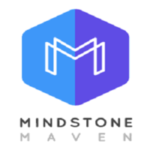Quantum AI Tutorials: Exploring the Future of Artificial Intelligence
Quantum computing has been a rapidly evolving field in recent years, and its intersection with artificial intelligence (AI) has opened up new possibilities for solving complex problems that were previously thought to be unsolvable. Quantum AI combines the principles of quantum mechanics with machine learning algorithms to create powerful tools for a wide range of applications, from optimization and data analysis to natural language processing and image recognition.
In this tutorial, we will explore the basics of quantum computing and how it can be applied to AI tasks. We will walk you through the fundamental concepts of quantum mechanics, such as superposition and entanglement, and explain how they can be used to perform computations that are exponentially faster than classical methods.
To get started with quantum AI, you will need to familiarize yourself with quantum ai platform quantum gates, which are the building blocks of quantum circuits. These gates operate on qubits, the quantum equivalent of classical bits, and allow us to manipulate the state of a quantum system. Some common quantum gates include the Hadamard gate, the CNOT gate, and the Toffoli gate, each of which serves a specific purpose in quantum algorithms.
Once you have a grasp of the basics, you can begin to explore more advanced topics in quantum AI, such as quantum machine learning and quantum deep learning. Quantum machine learning algorithms leverage the power of quantum superposition and entanglement to train models on quantum data, while quantum deep learning extends this concept to deep neural networks that can tackle complex tasks like image and speech recognition.
In addition to machine learning, quantum AI also offers solutions for optimization problems through quantum annealing and variational algorithms. Quantum annealing is a technique that uses quantum fluctuations to find the global minimum of a cost function, making it ideal for solving optimization problems in fields like finance, logistics, and chemistry. Variational algorithms, on the other hand, combine classical and quantum computations to optimize parameters in a machine learning model, offering a hybrid approach to optimization.
As you delve deeper into the world of quantum AI, you will encounter quantum programming languages like Qiskit and Cirq, which provide the tools and libraries needed to develop quantum algorithms and run them on quantum hardware. These platforms offer a user-friendly interface for writing quantum circuits, executing them on simulators, and eventually running them on real quantum devices.
To help you get started on your journey into quantum AI, here is a list of resources and tutorials to explore:
– Quantum Computing for the Determined by Michael Nielsen: This comprehensive guide covers the fundamentals of quantum mechanics and quantum computation, providing a solid foundation for understanding quantum AI. – Qiskit Documentation: Qiskit is an open-source quantum computing framework developed by IBM, offering tutorials, code samples, and documentation for building and running quantum circuits. – Quantum Machine Learning by Peter Wittek: This book explores the intersection of quantum computing and machine learning, discussing algorithms, models, and applications in quantum AI.
By immersing yourself in the world of quantum AI tutorials and resources, you can gain the knowledge and skills needed to harness the power of quantum computing for advancing artificial intelligence. As quantum technology continues to evolve, opportunities for innovation and breakthroughs in AI will abound, shaping the future of computation and transforming the way we approach complex problems.

Leave a Comment